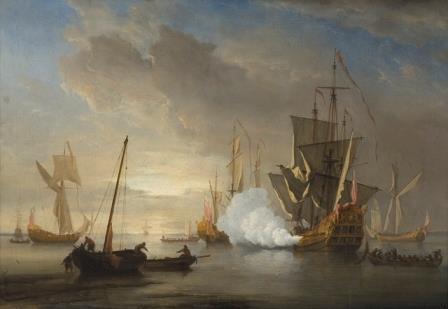Recommendation
In a letter dated 14 May 2007, the Minister for Education, Culture and Science (hereafter referred to as: ‘the Minister’) requested the Restitutions Committee (hereafter referred to as: ‘the Committee’) to issue a recommendation regarding the application submitted by A.W.M. (hereafter referred to as ‘the applicant’) on 3 April 2007 for the restitution of three works of art in the Netherlands Art Property Collection (hereafter referred to as: ‘the NK collection’). According to the applicant, the art dealership of his stepfather Moritz Schönemann involuntarily lost possession of these works during the occupation. The applicant is represented by Imke Gielen, lawyer in Berlin.
The application concerns The archangel Michael and St. Laurence (NK 2082) by an anonymous artist, Landscape with fighting horses and birds (NK 2085) by R.J. Savery and A man-of-war firing a salute: ships in a calm at sunset (NK 2366) by W. van de Velde II. The painting NK 2082 is on loan to the Bonnefantenmuseum in Maastricht, the painting NK 2085 is on loan to Kasteel Doorwerth and NK 2366 is currently housed in the depot of the Netherlands Institute for Cultural Heritage. The last-named painting is also part of another application for restitution (RC 1.90A). The Minister rejected that application in accordance with the Committee’s recommendation on 31 August 2009.
